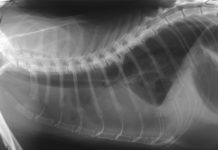The ability of a cat to move around and perform day-to-day activities varies on the capability of its nerves, spine, brain, and muscles, in order to coordinate together. This particular complex communication system actually involves the nerves in the brain, which send messages regarding the outer environment to the body, as well as the body sending messages to the brain about what it’s actually experiencing on the environment. These particular messages are being transmitted via the spinal cord’s nerves that
Paralysis in Cats: What is this feline condition?

The paralysis in cats, even though partial or temporary, is always a sign of a causal condition or an injury. You need to seek an immediate vet care if the cat suddenly displays any symptoms of paralysis. Because this condition may lead to serious, permanent injury, as well as death –especially if not treated quickly by a vet.
Moreover, paralysis in cats happens when the pet is not able to move or control its legs or some other portion of its body. A complete paralysis actually involve the complete lack of the capacity to move the legs, tail, neck, or some other bodily parts. Further, partial paralysis or paresis is the lack of having a full control over the body that might appear as twitching, weakness, extreme slow motion, or lethargy.
Causes of Cat Paralysis
The paralysis in cats may happen when some part of the structures, which support the central nervous system gets damaged. Additionally, a complicated pathway of the nerves are being covered in the spinal column of the body, thus allowing communication from the brain up to the limbs, organs, and some other structures in the body. When this particular communication gets damaged, paralysis may happen. The location of the paralysis may indicate what areas indicate which area of the nerves has already become damages.
The more common causes of damage may include the following:
- Embolism that inhibits proper flow of blood to the affected limb
- Certain toxins or chemicals, which may cause the nerves to cease in communicating temporarily or permanently
- Malformation of the vertebrae or spine
- Tumors on the brain or spine that place a pressure on the nerves
- Tick paralysis due to tick bites
- Muscle inflammation in the muscles that surround the spine that places pressure on the neighboring nerves
- Slipped discs in the back, which damage or pinch the adjacent nerves
- Infection in the tissue or bones near the spine
- Traumatic injury
Symptoms of Cat Paralysis
The symptoms of paralysis in cats might range from delicate to palpable depending on the causal condition of the issue. The symptoms may happen so suddenly or may escalate over a long period of time,
The symptoms that you need to watch out for are as follows:
- Dribbling of urine
- Improper urination
- Difficulty in drinking or eating
- Lack or delayed reaction to pain or some other stimulus to the legs, body, or any affected areas
- Extreme slowness of movement different from lethargy
- Unrestrained twitching
- Difficulty in breathing
- Stepping on tis toes
- Inappropriate or faltering gait
- Incapacity to more or use parts of the body –just like tongue, legs, neck, tail, head, or back
Treatments for Cat Paralysis

The treatments of paralysis in cats may vary on the original cause of the feline condition. Further, suspected infection may also be treated using antibiotics. In a lot of cases, the nerves may repair or regrow with proper care and time. In the event that the vet spots an injury that the cat will reconcile from over time, they might prescribe some anti-inflammatory medicines, in order to reduce the pressure in the spinal column area. They’ll also direct you on the right home cure.
Moreover, cats must never be left on the very same spot for more than 2 hours. Further, it may also need an assistance in the manual emptying of their bowels and bladder. Not only that, nutrients might also need to be intravenously administered or via a feeding tube. In some instances, light massage and heating pads might encourage the blood flow to the area affected that can encourage growth and healing. The gentle manipulation of the muscles may also help in minimizing any atrophy, which may get the cat back on its feet more rapidly once it have already healed. In addition, cases where recovery and healing is possible, it’ll be significantly important to follow all the schedules for treatments and physical therapy. Moreover, the recovery from any paralysis might be protracted and slow, yet generally, you need to start seeing some improvement in about a month or two. Recurrent follow-up with the vet may also be significant to the long term health of the cat. Further, if a cat has been affected with any paralyzing illness, it must be spayed or neutered, so that it doesn’t risk being injured further by breeding.









